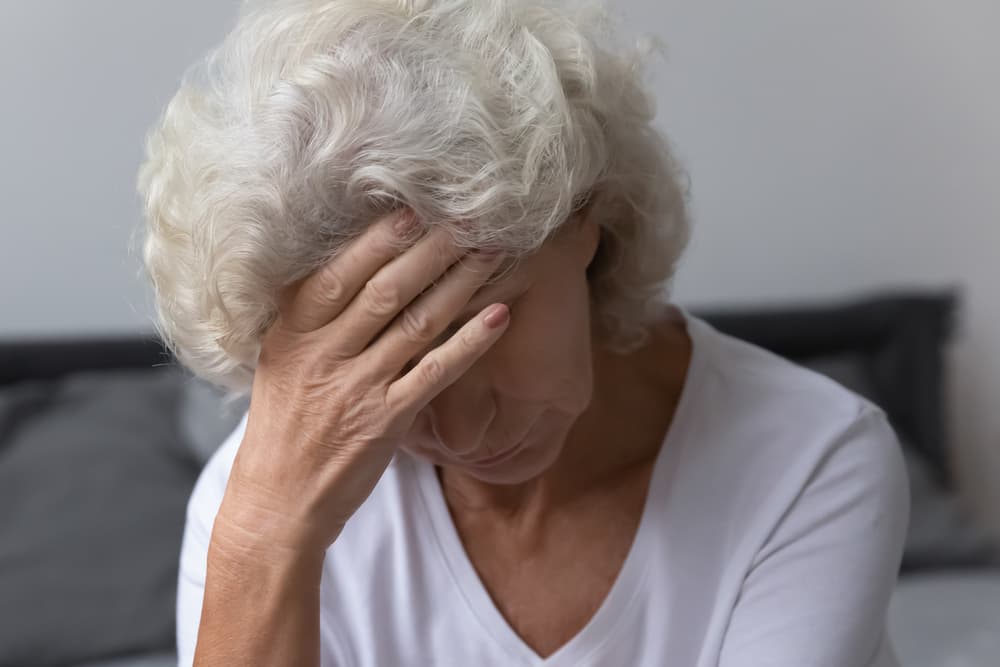How Often Should Nursing Home Staff Check on Bedridden Residents?
Nursing Home AbuseAs a general rule, nursing home staff should check on and reposition bedridden residents at least every two hours. This is a widely accepted standard of care designed to prevent serious health complications, but the exact frequency depends on each resident’s individual health needs and risks, which should be outlined in their personal care plan. Failing to follow this schedule can be a sign of neglect and may lead to painful and dangerous conditions like pressure ulcers. If you suspect your loved one has suffered because staff ignored these standards, a nursing home neglect lawyer can help you hold the facility accountable and pursue justice on their behalf.
Key Takeaways about How Often Nursing Home Staff Should Check on Bedridden Residents
- Nursing home staff are generally expected to check on and reposition bedridden residents a minimum of once every two hours.
- An individual resident’s comprehensive care plan, which is required by federal law, dictates the specific frequency of checks based on their unique medical condition.
- Inadequate monitoring and repositioning can lead to severe health issues, most notably pressure ulcers (bedsores), infections, malnutrition, and dehydration.
- Federal and South Carolina state regulations establish a legal standard of care that nursing facilities must provide to all residents.
- Families who notice signs of neglect, such as the development of bedsores or poor hygiene, have the right to question the facility’s practices and seek accountability.
The Standard of Care: Deconstructing the “Every Two Hours” Rule

When you hear that a bedridden person should be moved every two hours, it’s more than just friendly advice; it’s a clinical benchmark in the healthcare community. This guideline is primarily focused on preventing pressure ulcers, also known as bedsores. These are injuries to the skin and underlying tissue that result from prolonged pressure on a specific area of the body. For someone who cannot move on their own, the constant pressure on points like the heels, hips, tailbone, and shoulder blades can restrict blood flow, causing tissue to break down and die.
However, a “check” should involve far more than a staff member simply poking their head in the door. A proper and thorough check for a bedridden resident should be a multi-point assessment.
What a comprehensive check may include:
- Repositioning. The resident is turned or shifted to relieve pressure from the previous position. This might involve using pillows or specialized cushions to maintain the new position and protect vulnerable areas.
- Skin Assessment. A caregiver should check for any signs of skin irritation, redness, or broken skin, particularly around bony areas. Early detection is crucial for preventing a small red spot from becoming a severe, infected wound.
- Hydration and Nutrition. The check-in is an opportunity to offer the resident water or other fluids and to see if they need assistance with a snack or meal.
- Personal Care. This includes checking if the resident’s bedding or clothing is soiled and needs to be changed to prevent skin breakdown from moisture.
- Comfort and Communication. The caregiver should also assess the resident’s general comfort, ask if they are in pain, and see if they need anything else.
This level of attentive care is what residents and their families should expect. The two-hour interval is a minimum, and for some residents, it’s not nearly enough.
Why the Resident Care Plan Is So Important
Every person in a nursing facility is unique, with their own set of health challenges and needs. That is why federal law, enforced by the Centers for Medicare & Medicaid Services (CMS), requires that every nursing home resident have a comprehensive, individualized care plan. Think of this document as the specific instruction manual for your loved one’s daily care. It is developed by the facility’s staff in coordination with the resident and their family.
This care plan should explicitly state how often a bedridden resident needs to be checked on and repositioned. The “every two hours” rule may be adjusted based on several factors.
Elements influencing the care plan include:
- Risk for Pressure Ulcers. A resident with fragile skin, poor circulation, or diabetes is at a much higher risk and may need to be repositioned every hour.
- Existing Medical Conditions. Issues like paralysis, incontinence, or cognitive impairment will require more frequent and specialized attention.
- Nutritional Status. A resident who is underweight or has a poor appetite may have less natural padding over their bones, making them more susceptible to pressure sores.
- Ability to Move. Even small, independent shifts in weight can help. The care plan will note if a resident is completely unable to move on their own.
You have a right to review your loved one’s care plan and ask questions about it. If you feel the plan doesn’t adequately address their needs, you can and should request a meeting with the care team to discuss your concerns.
The Serious Consequences of Infrequent Checks
When nursing home staff fail to check on and reposition bedridden residents according to their care plan, the results can be devastating. This failure isn’t just poor service; it’s a form of neglect that can cause significant pain, suffering, and a rapid decline in health. Whether the facility is in a bustling area like Charleston or a quieter community, the standards for care remain the same.
The Dangers of Pressure Ulcers (Bedsores)
The most direct and common consequence of this type of neglect is the development of pressure ulcers. These are not simple rashes; they are serious wounds that are categorized in stages based on their severity.
- Stage 1: The skin appears red and feels warm to the touch. It does not blanch (turn white) when you press on it, indicating a lack of blood flow.
- Stage 2: The skin breaks open, wears away, or forms a blister. The wound is tender and painful.
- Stage 3: The ulcer extends deeper through the skin into the fatty tissue below. The wound looks like a crater.
- Stage 4: The damage is extensive, reaching into muscle, bone, and supporting structures like tendons. These wounds carry a high risk of life-threatening infections.
Pressure ulcers can lead to severe complications, including sepsis (a body-wide infection), bone infections (osteomyelitis), and cellulitis. They are extremely painful and can take months or even years to heal, if they heal at all.
Other Health Complications from Neglect
Beyond bedsores, a lack of regular monitoring can cause a cascade of other health problems for an immobile resident.
These additional risks include things like:
- Malnutrition and Dehydration. If no one is regularly checking in to offer assistance, a resident may not be able to get the food and water they need.
- Infections. Lying in soiled bedding can lead to urinary tract infections (UTIs) and skin infections. Prolonged immobility can also contribute to pneumonia.
- Contractures. Without regular movement and range-of-motion exercises, a resident’s muscles and tendons can stiffen and shorten, causing their joints to become permanently fixed in a bent position.
- Depression and Isolation. Being left alone for long stretches can cause severe emotional distress, anxiety, and feelings of abandonment.
These conditions are often preventable with attentive, consistent care. When they occur, it can be a strong indicator that the facility is failing in its duties.
Nursing Home Standards in South Carolina
Nursing homes in South Carolina are regulated by both federal law and the South Carolina Department of Health and Environmental Control (DHEC). These agencies set the minimum standards for staffing, safety, and quality of care that all facilities must meet. The laws are in place to protect vulnerable residents.
Part of these regulations includes a Residents’ Bill of Rights, which ensures every resident is entitled to receive the necessary care and services to “attain or maintain the highest practicable physical, mental, and psychosocial well-being.” This includes the right to be free from neglect. When a facility fails to provide adequate monitoring for a bedridden resident, they are not only causing harm but are also violating that resident’s rights.
How to Recognize Signs of Inadequate Monitoring

As a family member, you are often the best advocate for your loved one. Trust your instincts. If something feels wrong during your visits, it’s worth investigating further. You can look for several clues that may indicate your loved one is not being checked on frequently enough.
Physical and Environmental Clues
When you visit your loved one, pay close attention to them and their surroundings.
- Unexplained Wounds or Bruises. The appearance of bedsores is the most obvious sign, but also look for bruises that might suggest rough handling during repositioning or falls.
- Poor Hygiene. Notice if your loved one is unbathed, has unkempt hair or nails, or if their room has a strong odor of urine or feces.
- Soiled Linens or Clothing. Check to see if their bedding or clothes are damp or soiled, as this suggests they have not been attended to recently.
- Dehydration or Weight Loss. Look for signs of dehydration like dry mouth, chapped lips, or sunken eyes. A sudden drop in weight is another major red flag.
- Unanswered Call Lights. Pay attention to how long it takes for staff to respond when your loved one (or another resident) presses their call button for assistance.
These physical signs can provide clear evidence that the required level of care is not being met.
Changes in Your Loved One’s Behavior
Neglect also takes an emotional toll. Your loved one’s mood and behavior can be a powerful indicator of how they are being treated when you are not there. Be alert to changes such as:
- A sudden withdrawal from conversation or activities they once enjoyed.
- New signs of depression, fear, or anxiety.
- A reluctance to speak or seem fearful when certain staff members are present.
- Complaints of being hungry, thirsty, or left alone for long periods.
Don’t dismiss these changes as just a part of aging. They can be cries for help, signaling that your loved one’s basic needs are being ignored.
What to Do if You Suspect Neglect
Discovering that your loved one may be a victim of neglect can be deeply distressing. It’s important to take calm, methodical steps to address the situation and protect them.
- Document Everything. Start a journal and log the details of every visit. Note the date, time, and what you observed. If you see a bedsore, take a picture of it. Write down the names of the staff you speak with and what they tell you. This record can be incredibly valuable.
- Speak with the Nursing Director. Schedule a formal meeting with the Director of Nursing or the facility administrator. Bring your documentation and calmly present your concerns. Ask to see the resident’s care plan and records of when they were repositioned.
- File a Formal Complaint. If the facility does not address your concerns satisfactorily, you can file a formal complaint with the South Carolina Department of Public Health. You can also contact the state’s Long-Term Care Ombudsman, who acts as an advocate for residents.
- Discuss Your Options with a Legal Professional. If your loved one has suffered a significant injury, like a Stage 3 or 4 bedsore, due to a lack of proper monitoring, you may want to understand your legal options. Talking to an affordable nursing home lawyer can help you determine the best path forward for holding the facility accountable. Many people searching for a “nursing home lawyer near me” are in this exact situation, seeking guidance on how to protect a family member.
FAQs: Nursing Home Staff and Bedridden Residents?
Here are answers to some common questions families have about the care of bedridden residents.
What is the difference between neglect and abuse in a nursing home?
Neglect is typically a failure to provide a person with the care they need, such as food, water, hygiene, or medical attention. This failure is often due to carelessness or understaffing. Abuse, on the other hand, is an intentional act that causes harm, such as physical assault, emotional mistreatment, or financial exploitation. Infrequent checks that lead to bedsores are usually classified as neglect.
Can a nursing home be understaffed, and does that excuse infrequent checks?
Many nursing homes face challenges with staffing. However, understaffing is not a legal excuse for failing to provide the standard of care required by law. Facilities are legally obligated to hire and schedule enough qualified staff to meet the needs of all their residents as outlined in their care plans.
How can I get a copy of my loved one’s care plan?
As a resident or their legal representative (such as someone with power of attorney), you have the right to access and review all of their medical records, including their comprehensive care plan. You can make a formal request in writing to the facility’s administration or medical records department.
What kind of compensation can be sought in a nursing home neglect case?
If a lawsuit is successful, compensation can cover a range of damages. This may include the cost of medical treatment for the injuries caused by the neglect, such as hospital stays or wound care. It can also include compensation for the resident’s pain and suffering, emotional distress, and disability or disfigurement.
Contact a Trusted Charleston Nursing Home Neglect Attorney

Watching a loved one suffer due to the carelessness of those entrusted with their care is a difficult experience. When a nursing home fails to provide the basic monitoring and repositioning a bedridden resident needs, they must be held accountable for the harm they cause. The attorneys at Hughey Law Firm have stood up for residents and their families across South Carolina, from Mt. Pleasant to the surrounding communities.
We understand the standards of care that facilities are required to meet and have a long history of taking on the insurance companies that defend them. Our firm is committed to fighting for the justice and compensation your family deserves. We offer a “no win, no fee” promise, which means our services are affordable, and you won’t owe us any attorney’s fees unless we recover money for you.
If your loved one has developed pressure ulcers or suffered other serious injuries in a Charleston area nursing home, contact Hughey Law Firm today at (843) 881-8644 or through our online form for a free, no-obligation consultation.
Nathan Hughey, an attorney and fourth-generation South Carolinian, founded Hughey Law Firm in 2007. Before that, he spent five years defending nursing homes and insurance companies. Leveraging his experience, he now advocates for those injured or wronged by such entities, securing over $290 million in verdicts and settlements.
